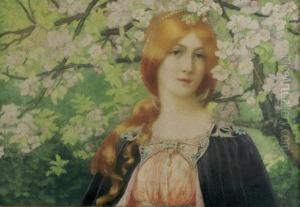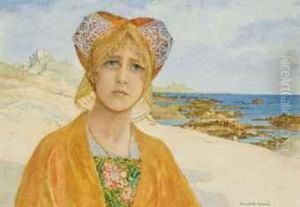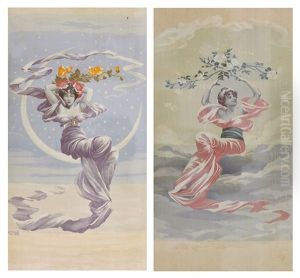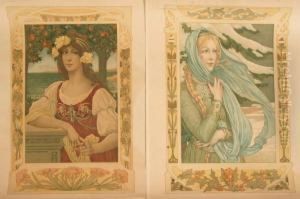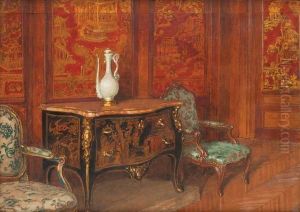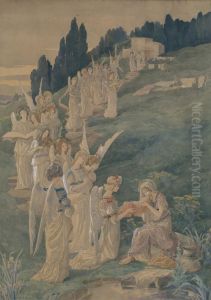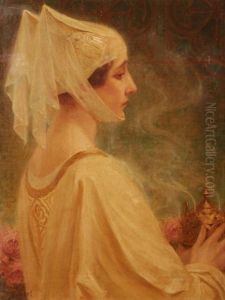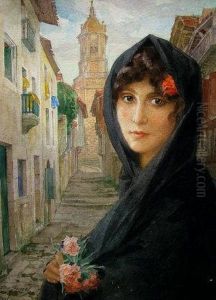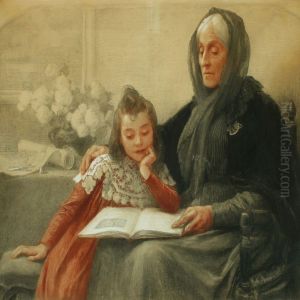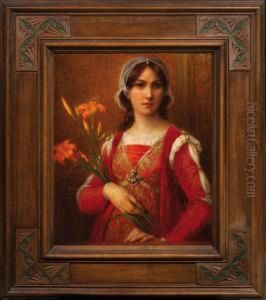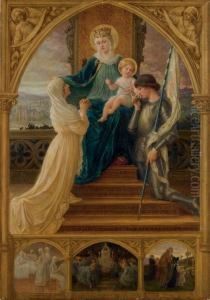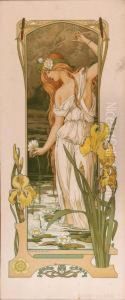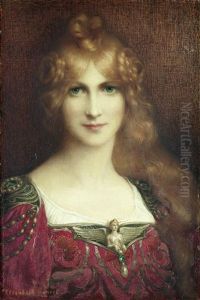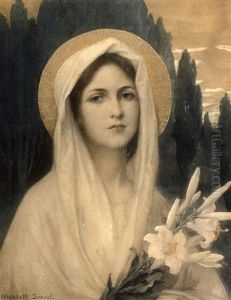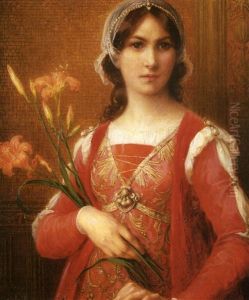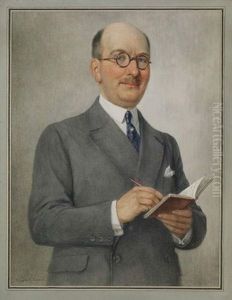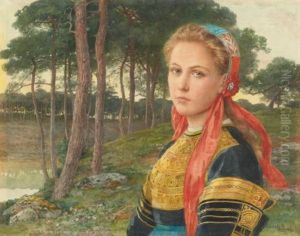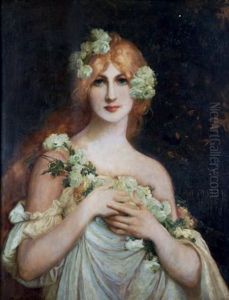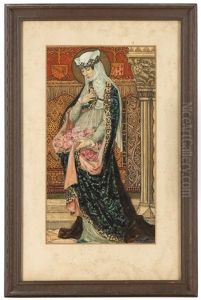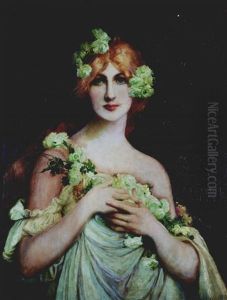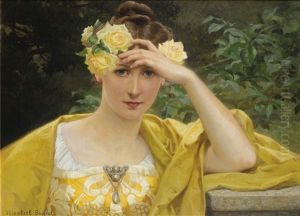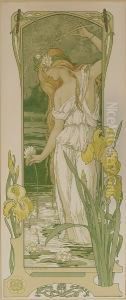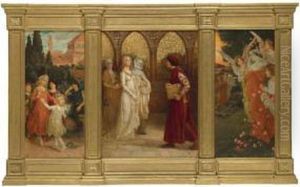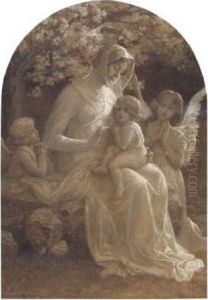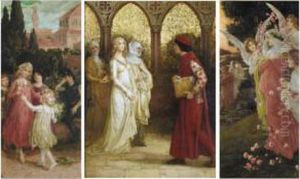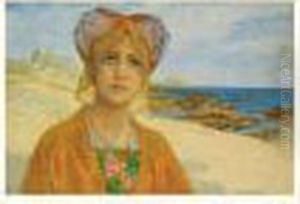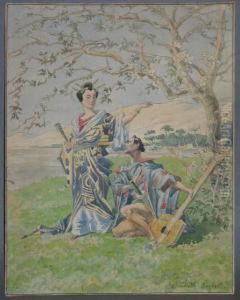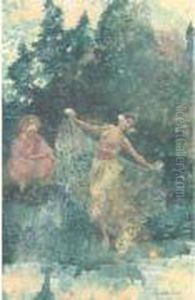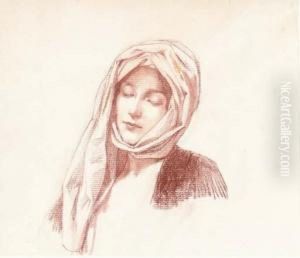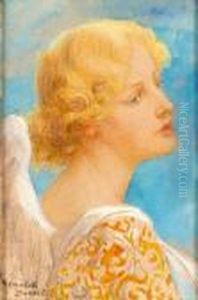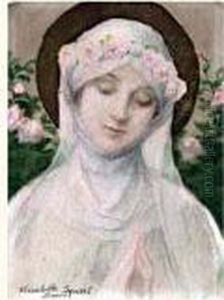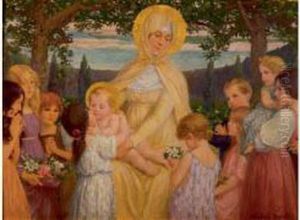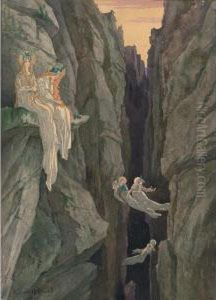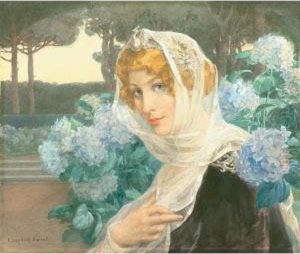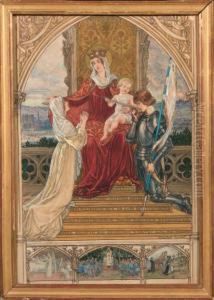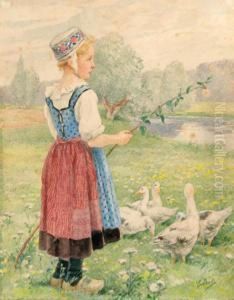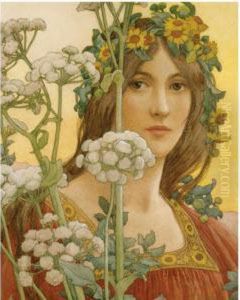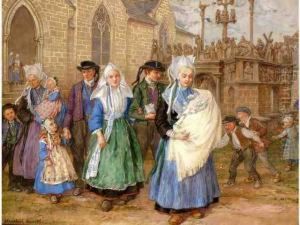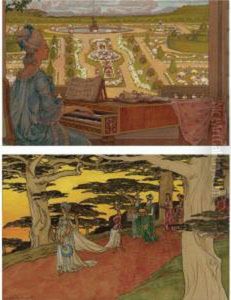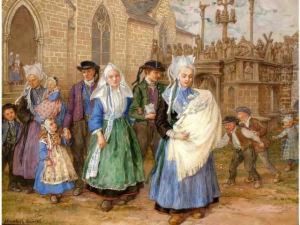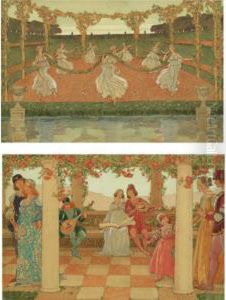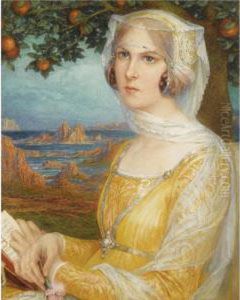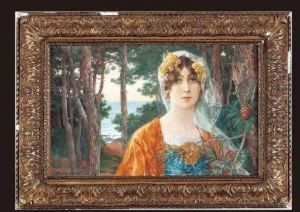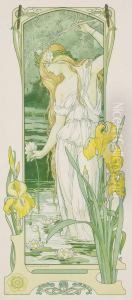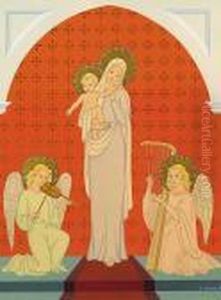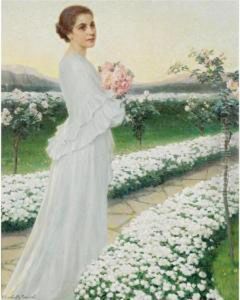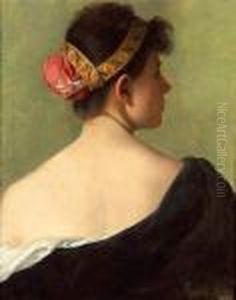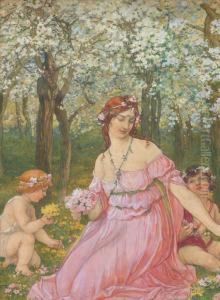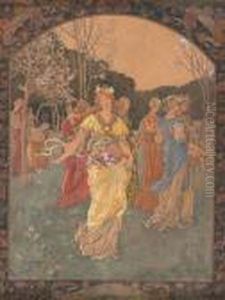Elisabeth Sonrel Paintings
Elisabeth Sonrel was a French painter and illustrator, part of the Symbolist movement, which was known for its emphasis on emotions, feelings, ideas, and subjectivity. She was born on April 25, 1874, in Tours, France. Elisabeth was the daughter of a well-known portrait painter, Nicolas Stéphane Sonrel, who was instrumental in her artistic education and development. Her father's guidance prepared her to enter the École des Beaux-Arts in Paris, where she studied under influential teachers such as Gabriel Ferrier and William-Adolphe Bouguereau.
Sonrel's work is characterized by a blend of Symbolist and Art Nouveau elements, often featuring ethereal female figures, religious themes, and nature-inspired motifs. She was particularly influenced by the Pre-Raphaelite Brotherhood, an English group of painters who also favored spiritual and mythological themes. Elisabeth Sonrel exhibited her work at the Salon des Artistes Français, where she received several awards, including an honorable mention in 1893 and a third-class medal in 1903.
Throughout her career, Sonrel produced not only paintings but also illustrations for books and postcards, which were very popular during her time. Her artistic output often reflected her personal interest in the mystical and the fantastical, as well as her affinity for medieval and Renaissance art. Despite facing the challenges of being a woman artist in a male-dominated field, Sonrel successfully exhibited her works internationally, including in the United States and Britain.
Elisabeth Sonrel's career spanned several decades, during which she continued to evolve her style and thematic focus. Her later works maintained the symbolic and allegorical qualities of her earlier paintings but became less associated with the Art Nouveau aesthetic as the movement's popularity waned. She remained active as an artist until her later years, with her work continuing to be well-regarded by collectors and art enthusiasts.
Elisabeth Sonrel passed away on February 27, 1953, in Sceaux, France. Though not as widely known today as some of her contemporaries, her contributions to the Symbolist movement and to French art are still appreciated by those who study and enjoy late 19th and early 20th-century art. Her paintings can be found in various museum collections and continue to be displayed in exhibitions that explore Symbolism and the role of women artists in the history of art.
